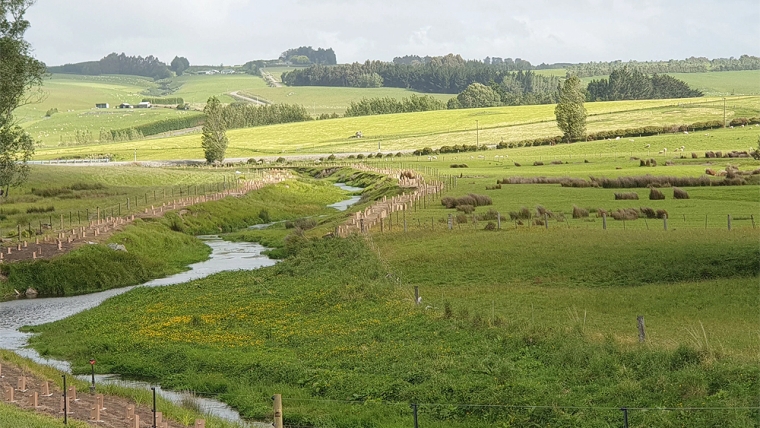
In recent days, the Government announced a reduction in New Zealand’s methane reduction targets. For many across the primary sector, it’s a welcome adjustment - a sign that policymakers are beginning to acknowledge the realities of agricultural production and the pace of technological change. Yet while the direction is encouraging, there’s a lingering unease about how far the pendulum has swung and whether future political shifts could send it swinging right back again.
For farmers, the issue isn’t resistance to progress. It’s about consistency. Long-term environmental and business planning simply can’t happen if the goalposts keep moving. Most would agree that reducing methane emissions is a worthwhile aim, but the path must be steady enough for practical investment and innovation to take hold.
That innovation is already coming. Research and development are bringing forward promising methane inhibitors, vaccines and genetic improvements that will allow New Zealand farmers to continue producing high-quality food while reducing emissions at the same time. It’s the kind of progress that shows what the sector can achieve when science, common sense and farming know-how align.
But the broader question remains: should New Zealand be held to the same standards as large, industrial polluters when our total footprint is a fraction of theirs? Our farming systems are largely pasture-based, low-input and globally recognised for their efficiency. Food production nations such as ours are providing sustenance for millions beyond our borders and doing so with some of the smallest environmental impacts per kilogram of product anywhere in the world. There is an argument that those leading in sustainable production should be supported to keep improving, not burdened by targets designed for vastly different economies.
That balance between environmental responsibility and practicality is something being worked out daily in rural communities. In Otago, one of those helping bridge that space is Craig Simpson, regional lead for the Otago Catchment Community. His work is grounded in collaboration - connecting farmers, funders and local groups to support on-the-ground environmental initiatives that make sense for each catchment. “I work with a number of catchment groups on a contract basis,” he says. “My role with the Otago Catchment Community is more around making sure we’ve got good relationships with our funders, that our coordinators have their work plans lined up and that we’re offering the support that catchment groups need.”
Craig’s view is that landcare and farming are not competing priorities but two sides of the same coin. “Farmers know their land better than anyone else,” he says. “By and large, they want to look after it. Often, if we can open people’s eyes to what’s living in their streams, that provides the realisation there is a reason to look after this. These are special species and unfortunately, throughout New Zealand many are threatened or struggling.”
Across Otago, the work is both practical and community-led. Catchment groups are reaching out to the wider public, bringing in schools, families and even urban residents to understand the local environment. “There’s been quite an evolution,” Craig says. “A lot of groups started out as landcare or environmental groups, but they’ve moved to tackle things on a catchment basis. We’ve also got urban groups now, so it’s not just about rural areas it’s about communities working together.”
One initiative Craig is particularly proud of is the Junior Landcare programme. Working with the Pomahaka WaterCare Group, they’ve developed a galaxias sanctuary near Tapanui, a project designed to connect schoolchildren with their local streams and native species. “Junior Landcare has provided some funding, which has been awesome,” he says. “It’s enabled us to get kids down to the stream, get them involved and really open their eyes to what’s living there. People drive over these streams every day and have no idea that native fish are living there. It’s quite cool to open people’s eyes, and that provides the basis for action going forward.”
The impact goes beyond science. Craig sees a real sense of community coming from these projects. “Often the kids go home and talk to their parents about what they’ve found and learned,” he explains. “It galvanises the community because, at the end of the day a lot of these species have been here for a lot longer than we have. It’s really cool to think we can protect them, work alongside them and in some cases restore their environment.”
This grassroots engagement reflects a wider cultural change across the primary sector. Craig has watched attitudes evolve over his years in environmental management. “There have been massive changes,” he says. “People are really thinking about how they work not just doing things the same old way because that’s how it’s always been done. They’re realising there’s another way to get the same outcomes but with a more positive response for the environment.”
Examples of that change are everywhere. Farmers are reimagining how they manage gullies and wet areas that were once seen as a nuisance. “At one stage they were a bit of a management nightmare,” Craig says. “Now we understand the importance of fencing them off, reducing sediment and other contaminants from entering waterways. I see more and more of this happening all over the place, it’s just about bringing people on that journey.”
What’s particularly encouraging is how these local initiatives are building momentum from the ground up. “Sometimes people don’t know what they don’t know,” Craig says. “But as awareness grows, more people are jumping on board. They’re learning about their environment, why it matters and getting involved. It’s all about everyone playing their part, if we can do that we’ll make great strides together.”
It’s this kind of work that makes the ongoing debate about methane targets feel, at times, disconnected from reality. On the ground, farmers and catchment groups are already leading environmental improvement. They’re investing time, money and energy into understanding their ecosystems and building solutions that last. What they need from Government isn’t more uncertainty, it’s a framework that recognises and supports the work already happening.
Stable, realistic policy gives people confidence to keep investing. It enables science-based tools to be implemented effectively. And it allows New Zealand to continue its global leadership in sustainable food production without sacrificing the economic backbone of rural communities.
The story in Otago shows what’s possible when environmental management is driven by those who live and work the land. It also highlights how education and community engagement can achieve what regulation alone cannot - lasting change rooted in understanding, pride and care.
If New Zealand can combine that grassroots energy with steady national policy, the future looks promising. We’ll reduce emissions, protect biodiversity and maintain our place as one of the most responsible food producers in the world. But to do that, we need certainty, not constant course corrections.
As Craig puts it, “Working together is always a great thing. If everyone does their little part, we’ll make great strides. It’s all about playing your part - and if we can do that, we can make a real difference.”
Have a listen to the podcast to hear the full story.
Angus Kebbell is a producer at The Weekly Hotwire. You can contact him here.
1 Comments
I'm trying to make sense of this article. Are you saying these farmers are already ahead of the previous settings and only need encouragement to continue to get better. Or that the new lower targets will help?
From what I see improvements are happening despite the rhetoric from both sides and the likes of Fonterras are going to continue the push whether the government or Fed farmers like it or not. Personally I hate the bureaucratic nature of the reporting etc but like the results. Fencing off gullies, steams ,wet areas etc is so much easier to manage and once set draws so much less resources. Upgrading effluent systems again make management so much easier and less wasteful.

We welcome your comments below. If you are not already registered, please register to comment.
Remember we welcome robust, respectful and insightful debate. We don't welcome abusive or defamatory comments and will de-register those repeatedly making such comments. Our current comment policy is here.